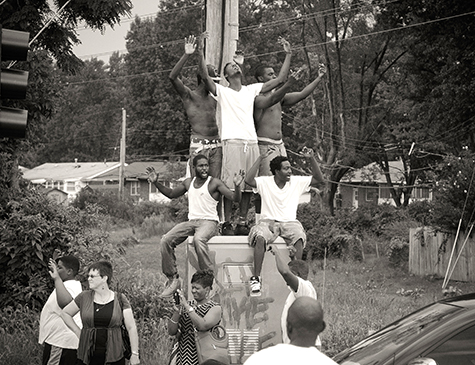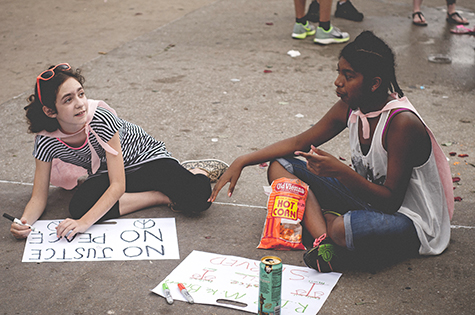
(Credit: Mark Regester)
Washington University Libraries, the library system of Washington University in St. Louis, is collecting and preserving photographs, video and other content for the digital repository “Documenting Ferguson.” Free and accessible to all, the online collection will serve as a lasting source of information regarding the Aug. 9 death of 18-year-old Michael Brown in Ferguson, Mo., and the ensuing protests and unrest.
“We want to have a place where anyone can deposit material,” said Rudolph Clay, head of Library Diversity Initiatives and Outreach Services and African & African-American Studies librarian. “There is a lot of content out there, and much of it is available on the Internet. But what happens over time is that a lot of that material disappears, and something you saw today might not be there in a week. We are making a commitment to preserve that material.”
To learn more or to submit material, visit digital.wustl.edu/ferguson.
More and more, the modern library chronicles history as it happens, Clay said. The sheer volume of material available has increased exponentially, as has the ability to share it quickly. But Clay said “Documenting Ferguson” will be more than a clearinghouse. As the repository grows, librarians will provide links to books, scholarly articles and other materials.
“That’s what libraries do best — provide context,” Clay said. “As a library, we can connect users to content, whether it be newspapers or datasets, that deepen understanding and lead to meaningful solutions.”
